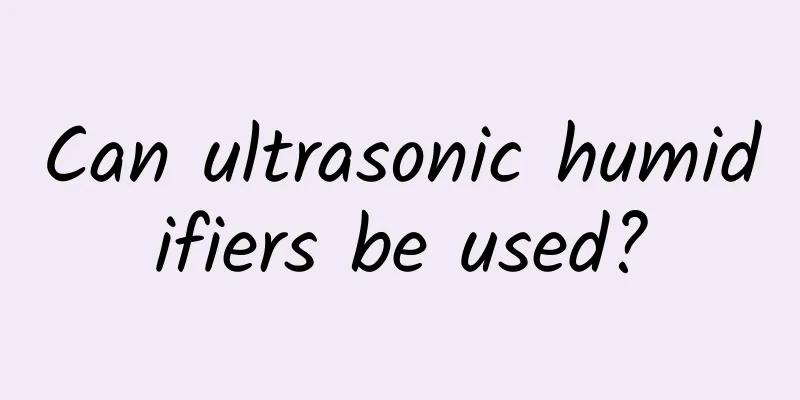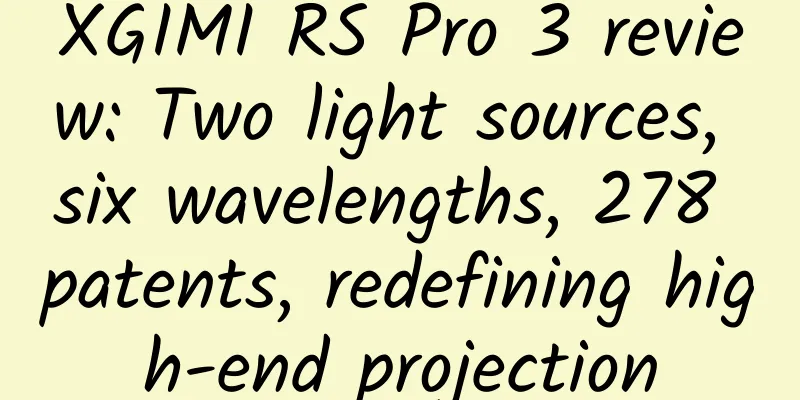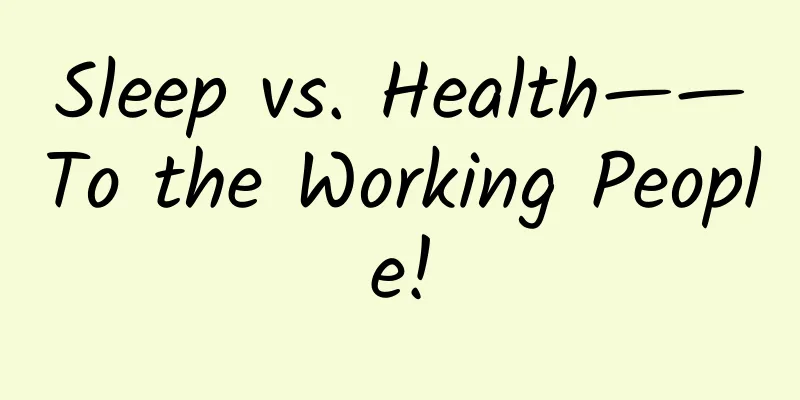Can ultrasonic humidifiers be used?

|
Winter is cold and dry, and many people like to use humidifiers. However, recently, many news reports about pneumonia caused by the use of humidifiers have sparked heated discussions online, which is worrying. Just recently, a well-known anchor strongly urged people not to buy ultrasonic humidifiers during a live broadcast. (Image source: Screenshot by the author) So, does using a humidifier really lead to pneumonia? Can ultrasonic humidifiers still be used? How can you choose a safe humidifier that suits you? Part 1 Can using a humidifier cause pneumonia? The most suitable relative humidity for the human body is between 40% and 50%. In the cold winter, especially in northern China, the air is extremely dry, with a relative humidity of only 20% to 35%. Low humidity will cause the body's moisture to evaporate too quickly, leading to dry respiratory mucosa, sore throat, thirst, dry throat and other symptoms. In addition, dry air will also cause insufficient moisture replenishment for the skin, causing the skin to lose elasticity and wrinkles, leading to accelerated aging. To solve these problems, humidifiers were invented. Humidifiers are devices that increase the humidity of the air by increasing the rate of water vaporization. Its functions are similar to mopping the floor with a wet mop, watering flowers, and hanging freshly washed clothes indoors, except that it frees people's hands and is more convenient and quicker. None of the common household activities mentioned above will cause pneumonia, so in principle, as long as the humidifier is used correctly, it will not cause pneumonia. The air humidity in Beijing on January 2, 2022 was only 34% (Image source: Screenshot by the author) Part 2 Is it true that ultrasonic humidifiers cannot be used? Let me first give you the answer: it can be used. However, if used improperly, it will cause adverse reactions, and in severe cases, it may even cause illness. This is related to the working principle of ultrasonic humidifiers. The frequency range of sound that the human ear can hear is 20-20000Hz. The frequency below 20Hz is infrasound, and the frequency above 20000Hz is ultrasonic. The ultrasonic humidifier has a built-in ultrasonic oscillator. When powered on, it uses high-frequency (frequency greater than 20,000 Hz) vibrations to break the water into small droplets of 1 to 10 microns, which then diffuse into the air, greatly increasing the contact area between water and air, thereby achieving the effect of humidifying the air. Working principle diagram of ultrasonic humidifier (Image source: self-made by the author) This process uses mechanical vibration to break up the water and diffuse it into the air. It does not sterilize or disinfect the water, so it has high requirements for the water used. If there are sediments in the water, such as scale or even smaller bacteria, they will also be indiscriminately blown into the air. These pollutants will enter the respiratory tract and lungs along with human breathing, causing pneumonia and other diseases, the so-called "humidifier pneumonia". Ms. Huang from Hubei Province contracted "Aspergillus pneumonia" due to a humidifier (Image source: Screenshot from https://www.sohu.com/a/446222215_754289) Now the case has been solved: "Humidifier pneumonia" does not mean that there is a problem with the humidifier itself, but is caused by improper operation during use. Therefore, when using an ultrasonic humidifier, you must pay attention to the cleanliness of the water used, such as using filtered pure water. And the humidifier should be cleaned regularly to avoid the growth of scale and bacteria. It should also be noted that in addition to pure water, any substances with additional functions such as lemon, perfume, disinfectant, etc. must not be mixed into the water of the humidifier, because these may be broken together by the ultrasonic wave and eventually sent into our lungs. Part 3 Is it safe to use other humidifiers instead of ultrasonic ones? At present, there are two main types of humidifiers commonly found on the market. In addition to the ultrasonic humidifiers mentioned above, the other type is the mistless humidifier, also known as the cold evaporative humidifier. The cold evaporative humidifier uses a honeycomb humidification net for humidification. The humidification net has countless holes. After each hole is filled with water, the contact area between water and air is greatly increased. Then the humidification net is blown by the built-in fan, thereby bringing moisture into the air. The essence of humidification is roughly the same as drying clothes in a ventilated environment. Working principle diagram of cold evaporative humidifier (Image source: self-made by the author) Humidification net of cold evaporative humidifier (Photo credit: Photo taken by the author) In addition, the humidification net is like a "mask". During the evaporation of water, some solid particles such as scale or bacteria will be adsorbed on the humidification net and intercepted, thus delivering us nearly pure water vapor, just like the distilled water used in the laboratory. Therefore, the cold evaporative humidifier is not so demanding on water use, and tap water can be used. However, it should be emphasized that as the usage time increases, a large amount of pollutants will be deposited on the humidifier net, affecting the adsorption and filtration effects, so the humidifier net must be cleaned regularly. In addition to the above two types of humidifiers, there are some less popular humidifiers. For example, the principle of the electric humidifier is similar to that of boiling water. It uses high temperature to increase the volatilization rate of water and then blows out the high-temperature water vapor. Its advantages are high humidification efficiency and heating and disinfection of the water source. Of course, the disadvantages are also obvious, such as high power consumption, easy to produce scale deposition and the risk of high temperature burns. There is also a type called a compound humidifier, which is a humidifier that has any two or more of the above principles at the same time. Similarly, there is nothing wrong with these humidifiers themselves. As long as they are used correctly and cleaned regularly, there is no risk of "humidifier pneumonia." Part 4 How to choose a humidifier that suits you? Now we know that no matter what type of humidifier, it can be used with confidence, but everyone needs to choose a humidifier that is more suitable for them according to their own situation. If the humidifier is placed at home, especially if there are children and elderly people at home, it is recommended to use a cold evaporative humidifier because it is safer, more environmentally friendly, more convenient, and does not require purified water as a water source. If it is used in the office, you can consider an ultrasonic humidifier, because most offices have free purified water and it can humidify the local area well. I would like to emphasize again that no matter what kind of humidifier you use, you must pay attention to cleaning the humidifier regularly and choose a clean water source! References: [1]Yao Wenchuo,Gallagher Daniel L.,GohlkeJulia M.,Dietrich Andrea M.. Children and adults are exposed to dual risks from ingestion of water and inhalation of ultrasonic humidifier particles fromPb-containing water[J]. Science of the Total Environment,2021,791: [2] Wenchuo Yao,Daniel L. Gallagher,Andrea M. Dietrich. An overlooked route of inhalation exposure to tap water constituents for children and adults:Aerosolized aqueous minerals from ultrasonic humidifiers[J]. Water ResearchX,2020,9: [3]Lau ChesterJ,Loebel Roson Max,Klimchuk Keifer M,Gautam Tania,Zhao Boyang,Zhao Ran.Particulate matter emitted from ultrasonic humidifiers-Chemical composition andimplication to indoor air.[J]. Indoor air,2020: [4] Sakamoto Susumu, Furukawa Marie, Shimizu Hiroshige, Sekiya Muneyuki, Miyoshi Shion, Nakamura Yasuhiko, Urabe Naohisa, Isshiki Takuma, Usui Yusuke, Isobe Kazutoshi, Takai Yujiro, Kurosaki Atsuko, Kishi Kazuma, Homma Sakae. Clinical and radiological characteristics of ultrasonic humidifier lung and summer-type hypersensitivity pneumonitis[J]. RespiratoryMedicine,2020,174: [5] Guo Li. Mechanism and influencing factors of skin aging[J]. Chinese Journal of Aesthetic Medicine, 2001(05):438-440. DOI:10.15909/j.cnki.cn61-1347/r.2001.05.037. Produced by: Science Popularization China Produced by: XY Unit: Dalian Institute of Chemical Physics, Chinese Academy of Sciences Producer: Computer Network Information Center, Chinese Academy of Sciences (The images with source indicated in this article have been authorized) The article only represents the author's views and does not represent the position of China Science Expo This article was first published in China Science Expo (kepubolan) Please indicate the source of the public account when reprinting China Science Expo |
<<: Why do many people feel pain all over their body after the age of 50? Doctors explain the reason
>>: Can the Centennial Orchid live 100 years? Wrong, it can actually live 2,000 years!
Recommend
Why can airplane wings, which are so thin, support engines weighing dozens of tons?
The main components of the wing include ribs, spa...
Write a WeChat article with 100,000+ views
There are often some media colleagues and media a...
The commercial value of OTT is underestimated. It is not impossible for it to take over the mobile Internet.
After decades of development, China's Interne...
Qoros Model Young SUV debuts at Guangzhou Auto Show: its last act before being abandoned by Chery?
At the 2017 Guangzhou Auto Show, Chery officially...
Be your own tennis star - the first test of the TV version of "All-Star Tennis"
Screen: Sound Effects: operate: Plot: Experience:...
Next single: Shuffle my life? | Digital Literacy
Audit expert: Jing Yuan, Intermediate Accountant ...
Analysis of Xianyu's competitive products
The demand for second-hand goods market is growin...
6 categories of digital marketing from the marketing cooperation between Yihaodian and Ping An
Marketing methods such as television ads and maga...
5 basic understandings of brand marketing
When it comes to brands, there are a thousand def...
Black holes also come in pairs? The heaviest supermassive black hole pair ever discovered!
Using archival data from the Gemini North telesco...
Are you more suitable for drinking milk or soy milk? 10 similarities and 10 differences between them
The Chinese Dietary Guidelines 2022 recommends dr...
Help! Why are ugly things favored by young people so popular?
It has to be said that the preferences of netizen...
Is it true that African mercenaries hold signs and shout? How much does it cost to produce an African mercenary advertising video?
8,000 kilometers away from China and with a 5-hou...
Three sisters who didn't smoke got lung cancer one after another! This is very important, but many people do it wrong
Expert of this article: Hu Zhongdong, deputy chie...
How to carry out data operations well? Here are 5 tips!
In today's Internet age, almost everyone know...









